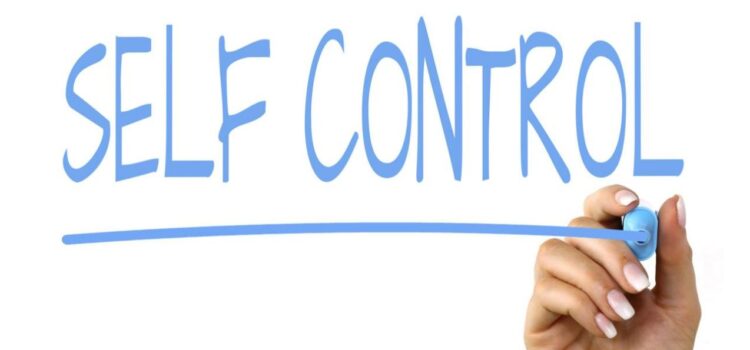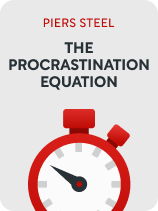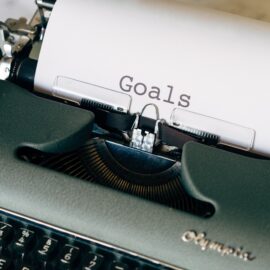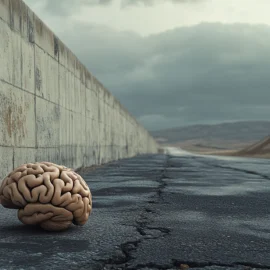

This article is an excerpt from the Shortform book guide to "The Procrastination Equation" by Piers Steel. Shortform has the world's best summaries and analyses of books you should be reading.
Like this article? Sign up for a free trial here.
Do you give in to distractions easily? What are ways to control your impulses?
It can be hard to practice impulse control when there are so many distractions around you. From your phone to video games, there are so many better things you’d rather be doing than work.
Here’s how to control impulses that cause you to procrastinate.
Manage Distractions and Impulses
In The Procrastination Equation, Piers Steel notes that since impulsivity causes procrastination, managing distractions and impulses can prevent procrastination. If you avoid things that offer tempting immediate rewards, you reduce the amount of time you spend delaying important tasks.
(Shortform note: You may find that if you wait a few minutes, the procrastination-inducing allure of distractions fades. In Ultralearning, Scott Young suggests setting a five-minute timer whenever you feel the impulse to procrastinate. Commit to working for at least those five minutes. When the timer goes off, you may want to continue working because the urge to distract yourself has passed. If you find yourself frequently choosing to stop working after five minutes, increase the time to 25 minutes followed by a five-minute break. As each period of productivity feels more natural, upgrade to longer periods of time.)
Here, we’ll explore two techniques to learn how to control impulses and manage distractions.
Technique #1: Remove Distractions From Your Workspace
Thanks to the internet, television, eye-catching advertisements, and a host of other potential distractions, our world is full of triggers that may tempt us to forgo important tasks for immediate satisfaction. According to Steel, one way we can prevent procrastination is by removing these distraction triggers from our work environment.
(Shortform note: Distractions are powerful because of the ingrained reward system in our brains. In Hyperfocus, Chris Bailey notes that every time we do something new, our brains release a hit of dopamine, the “feel-good” neurochemical. This happens every time we switch tasks or stop work to follow a distraction. Because this makes us feel good, it’s hard for us to avoid, making this kind of procrastination highly tempting. That’s one reason why Steel’s strategy of removing access to distractions may be an effective measure to prevent procrastination.)
Steel suggests doing the following to avoid common triggers:
1) Silence email notifications on your computer. Every time an email pops up, we tend to click on it, breaking our focus and preventing us from deeply engaging in more pressing work.
(Shortform note: In Eat That Frog!, Brian Tracy expands on this advice, arguing that you shouldn’t check your email first thing in the morning. Checking first thing prompts a dopamine hit that your brain seeks to repeat the rest of the day. Additionally, to avoid distraction, limit your email checking to twice a day, and close out of your inbox after each time.)
2) Remove computer shortcuts to games and websites you commonly visit. The more readily available something is, the more likely it’ll become a distraction. Therefore, by making it more difficult to access common distractions like games and websites, you’re reducing the chance that you’ll use them.
(Shortform note: In today’s world, most internet-based distractions likely come from smartphone apps and social media websites like Instagram, TikTok, and Twitter. If you have trouble stopping yourself from using a particular app, consider installing apps that block social media, such as AppBlock or Flipd. Many of them let you schedule time blocks during which you’re unable to access the distracting apps, giving you pre-planned, uninterrupted work time.)
3) Clean up your workspace. A cluttered workspace means a workspace full of distractions—every time you have to look for something or move things around, you’re increasing the probability that something will sidetrack you.
(Shortform note: In Getting Things Done, David Allen offers suggestions for creating an organized, consistent workspace that minimizes distractions. At its most basic, your workspace should have a writing surface, an in-tray for papers, and a space for a computer or other digital devices. You may also want a printer, file drawers, stacking trays, reference shelves, and a whiteboard. If you work both in an office and at home, create an identical setup in both locations so you can use the same organization system no matter where you are.)
Technique #2: Create Negative Consequences for Procrastination
Steel states that you can also discourage procrastination by setting up an accountability measure that includes negative consequences if you give into the impulse to procrastinate. If you know that something unpleasant will happen as a result of your procrastination, you’ll have far less incentive to heed your impulses.
(Shortform note: Self-imposed consequences will likely motivate you more than the inherent long-term consequences of procrastination we discussed earlier (such as poor health outcomes and financial hardship). First, the accountability measures are more immediate—it’s much harder to ignore something that’ll affect you tomorrow than it is to ignore consequences that might occur in a few years. Second, your accountability measures are more concrete—you know exactly what will happen, so it feels more real. Long-term consequences are often too abstract to be immediately motivating—which is the same reason long-term goals are difficult to follow.)
Whatever accountability measure you choose, make sure it’s reasonable—it shouldn’t be so rigid that you can’t get out of it under special circumstances. However, it shouldn’t be so easy to break that it’s not really an incentive at all.
For example, you might promise to do all the chores in the house for a month if you don’t pay your bills by a certain date. To ensure that you stick to this arrangement, maybe you create a written agreement with the other members of your household. To ensure that you aren’t held responsible for delays that arise from events outside of your control, you might include stipulations in your agreement that allow for special circumstances, such as delaying bill payments because you had to use the money for an emergency.
| Choose Rehabilitative Consequences Over Self-Punishment Some experts recommend that when you’re designing accountability measures, the consequences you create should be rehabilitative ones, specifically. Rehabilitative consequences prepare you to get back on track with your goals. Though they can feel unpleasant, they often push you toward more positive actions. You can design rehabilitative consequences that fit Steel’s definition of a reasonable accountability measure. For example, a rehabilitative consequence for failing to pay the rent on time would be altering your budget so you have enough funds to pay the next month’s rent in four weekly installments—unless you face a special circumstance, such as losing your job. In contrast, self-punishment is deliberately harming yourself for perceived wrongdoings. It uses fear to make you avoid certain actions, but it doesn’t show you how to change and grow. This is only a behavior change on the surface level. Additionally, self-punishment puts you in a negative headspace, making you less resilient to stress and less motivated. For example, if your accountability measure involved berating yourself or depriving yourself of a meal, that would be harmful self-punishing behavior and not helpful to your goals. |

———End of Preview———
Like what you just read? Read the rest of the world's best book summary and analysis of Piers Steel's "The Procrastination Equation" at Shortform.
Here's what you'll find in our full The Procrastination Equation summary:
- Strategies to help procrastinators increase their motivation and control
- How to make unpleasant tasks feel more valuable for yourself
- Why procrastinators are typically less financially successful






